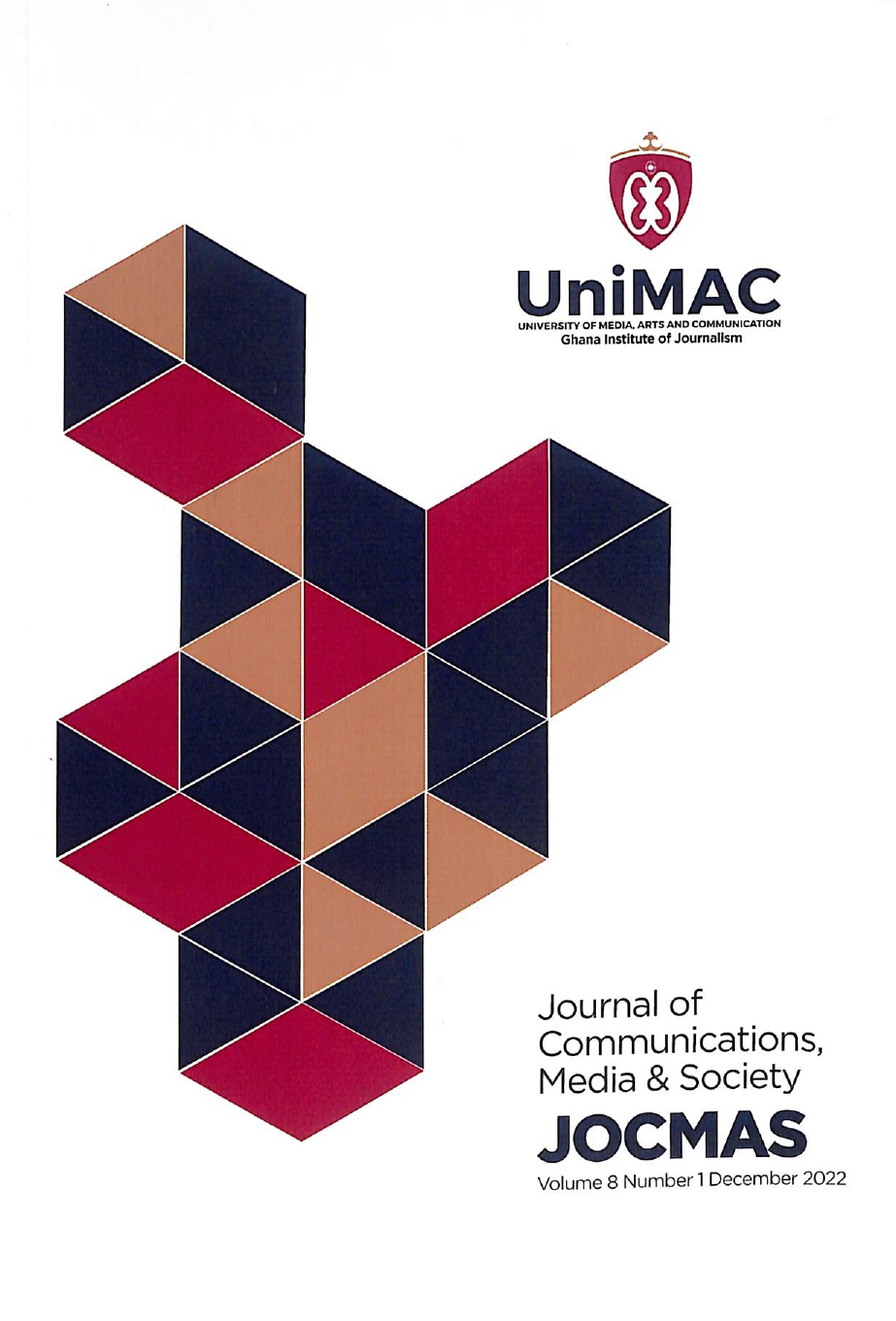Exploring the Linguistic Landscape of Cape Coast: Are Our Indigenous Languages Safe in the Public Space?
DOI:
https://doi.org/10.63772/jocmas.v9n1.5Keywords:
Linguistic Landscape, Advertising, Billboards, Multimodal CommunicationAbstract
The use of the English language as the official language in Ghana has had a toll on the representation of Ghanaian languages in the public space. Even though few studies in Ghana have investigated the linguistic landscape of towns such as Ajumako, Kejetia, and some others, there is no known study on the linguistic landscape of Cape Coast metropolis, the hub of education in Ghana. This study explored the linguistic landscape of Cape Coast Metropolis. The researchers selected forty (40) billboards from four strategic locations in the Cape Coast metropolis. Using Landry and Bourhis’ (1997) theory of linguistic landscape, and Kress and van Leeuwen’s (2006) theory of Reading Images, the researchers analyzed the data gathered. The analysis revealed that Cape Coast is a multilingual town and the three languages used in the public space are English Language, Twi, and Fante. Further analysis revealed that the English language dominated the public space, followed by Twi, and lastly, Fante. Moreover, it was discovered that visuals in the billboards play a complementary role in communicating meaning to the audience. This study calls the attention of policymakers to consider revising the language policy towards promoting the use of Ghanaian languages in the public space as a strategy to sustain the culture of using our languages in the public space.
Downloads
Usage Statistics
- Abstract Views: 260
- PDF Downloads: 87
References
Akoto, O. Y. (2018). Language choice and institutional identity: A study of the mottos of Ghanaian educational institutions. Word, 64(3), 177–190. https://doi.org/10.1080/00437956.2018.1490421 DOI: https://doi.org/10.1080/00437956.2018.1490421
Anane, J. (2019). Inscriptions on canoes: The case of Winneba seashore. International Journal of Social, Politics and Humanities, 3(1), 73–89.
Backhaus, P. (2006). Multilingualism in Tokyo: A look into the linguistic landscape. International Journal of Multilingualism, 3(1), 52–66. DOI: https://doi.org/10.1080/14790710608668385
Belch, G. E., & Belch, M. A. (2003). Advertising and promotion: An integrated marketing communication perspective (6th ed.). New York: McGraw-Hill.
Ben-Rafael, E., Shohamy, E., Amara, M. H., & Trumper-Hecht, N. (2006). Linguistic landscape as a symbolic construction of the public space: The case of Israel. In D. Gorter (Ed.), Linguistic landscape: A new approach to multilingualism (pp. 7–30). Clevedon: Multilingual Matters. DOI: https://doi.org/10.2307/jj.27939665.4
Cenoz, J., & Gorter, D. (2009). Language economy and linguistic landscape. In E. Shohamy & D. Gorter (Eds.), Linguistic landscape: Expanding the scenery (pp. 55–69). New York: Routledge.
Dagenais, D., Moore, D., Sabatier, C., Lamarre, P., & Armand, F. (2009). Linguistic landscape and language awareness. In E. Shohamy & D. Gorter (Eds.), Linguistic landscape: Expanding the scenery (pp. 253–269). New York: Routledge.
Edelman, L. (2009). What’s in a name?: Classification of proper names by language. In E. Shohamy & D. Gorter (Eds.), Linguistic landscape: Expanding the scenery (pp. 141–154). New York: Routledge.
Gorter, D. (2006). Further possibilities for linguistic landscape research. In D. Gorter (Ed.), Linguistic landscape: A new approach to multilingualism (pp. 81–89). Clevedon: Multilingual Matters. DOI: https://doi.org/10.2307/jj.27939665.8
Gorter, D. (2009). Linguistic landscape and minority languages. International Journal of Multilingualism, 3(1), 67–80. DOI: https://doi.org/10.1080/14790710608668386
Gorter, D. (2013). Linguistic landscapes in multilingual world. Annual Review of Applied Linguistics, 33, 190–212. https://doi.org/10.1017/S0267190513000020 DOI: https://doi.org/10.1017/S0267190513000020
Kress, G., & van Leeuwen, T. (2006). Reading images: The grammar of visual design. London: Routledge. DOI: https://doi.org/10.4324/9780203619728
Landry, R., & Bourhis, R. Y. (1997). Linguistic landscape and ethnolinguistic vitality: An empirical study. Journal of Language and Social Psychology, 16(1), 23–49. DOI: https://doi.org/10.1177/0261927X970161002
Radtke, O., & Yuan, X. (2011). “Please don’t climb trees and pick flowers for the sake of life”: Making sense of bilingual tourism signs in China. Language and Intercultural Communication, 11, 389–407. DOI: https://doi.org/10.1080/14708477.2011.616592
Shohamy, E., & Gorter, D. (Eds.). (2009). Linguistic landscape: Expanding the scenery. New York: Routledge. DOI: https://doi.org/10.4324/9780203930960
Tufi, S., & Blackwood, R. (2010). Trademarks in the linguistic landscape: Methodological and theoretical challenges in qualifying brand names in the public space. International Journal of Multilingualism, 7, 197–210. DOI: https://doi.org/10.1080/14790710903568417
Downloads
Published
Issue
Section
License
Copyright (c) 2025 Journal of Communications, Media And Society (JOCMAS)

This work is licensed under a Creative Commons Attribution-NonCommercial 4.0 International License.








